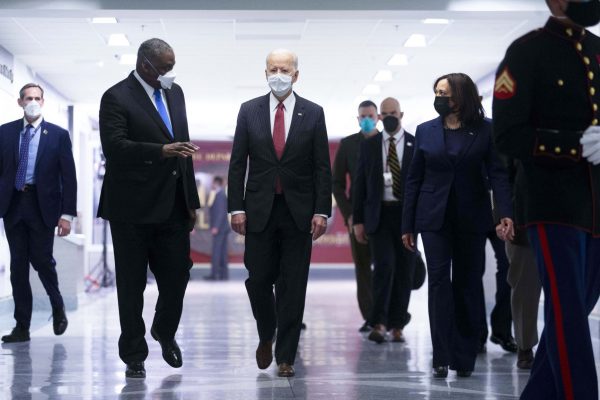In undoing the political and reputational damage done by his predecessor, Biden has a hefty task of convincing both Americans and America-watchers that the United States still occupies a central role in the international system and can act as a force for good.
Much like the famous rhyme for marital success, Biden has decided to opt for ‘something old’ and surround himself with people he has had a track record working with. His foreign policy team comprises long-time practitioners and experts, many of whom were integral to the Obama administration and the Clinton cabinet.
The new administration will work to prioritise diplomacy, elevate multilateralism and incorporate values in the conduct of foreign policy. But there is also the ‘something new’ aspect of Biden’s nascent foreign policy doctrine that will differentiate it from his Democrat predecessors. Biden’s foreign policy will be more constrained by situational factors at home and abroad. Deep political divisions and multiple crises — emerging from or amplified by the COVID-19 pandemic — will limit his presidential attention and action. And as the world grows more unstable, uncooperative and illiberal, US foreign policymakers will have significantly less room to manoeuvre.
Rather than a radical departure from the Trump era, there are still elements from the previous administration that could qualify as ‘something borrowed’. While the new administration is talking up cooperation on transnational issues such as climate change, global health and arms control, it is bound to maintain the inherited competitive disposition towards China. It has made it abundantly clear that economic statecraft will remain a vital aspect of its strategy.
Yet, there is uncertainty around the policy specifics, much of which will hinge on contingency planning and bureaucratic politics. While we can only speculate as to what Chinese foreign policy will look like over the next four years, there is less room for guesswork when it comes to the key divides in Biden’s team.
First, there is the question of setting policy priorities. There are some well-founded fears that a divide over traditional and non-traditional security issues is beginning to drive a wedge through the administration. On one hand, there are those who believe the greatest threats to the United States are of primarily kinetic origin. On the other, there are those who argue the largest threats are anthropogenic.
The former argue that the United States should maximise its military and economic capabilities to compete with China. The latter maintain that climate change is the mother of all questions that can only be addressed if the world’s two largest economies work together.
Second, there is a generational divide within the top echelons of the executive branch. The President’s younger appointees generally advocate for a more assertive response to China, while the older guard are wary of a new Cold War.
Finally, the interaction of bureaucratic and domestic politics will have a decisive impact on Biden’s policy direction. The Obama years are a telling example of the long road between strategic planning and policy implementation. Obama began his first term with a dovish outreach to China, but as China appeared to grow more assertive the more hawkish response advocated by the State Department became the preferred policy. The infamous ‘pivot to Asia’ was never fully implemented because US domestic politics and partisanship got in the way of ratifying the Trans-Pacific Partnership, and attention to seeing through this agenda in Obama’s second term shifted with the reprioritisation of the Middle East and Europe.
What these variables might look like during the Biden years remains to be seen. Nonetheless it is not wildly imprudent to assert that bureaucratic rivalries will surface and affect the formulation of policies. Partisan politics and the slimmest of margins in Congress will further complicate policymaking. Key questions — such as how much competition with China is productive and the merits of Washington’s decoupling strategy — will also create domestic winners and losers who will lobby for their preferred outcome.
The early signals point towards President Biden’s willingness to confront Chinese leadership over a whole range of issues — from unfair trading practices, gross human rights abuses in Xinjiang, crackdown on democracy in Hong to the growing assertiveness over Taiwan. Biden is far from the first US president to excoriate Chinese government’s actions. The forthcoming months will tell to what extent rhetoric will be matched by policy response.
For those in Asia, there are still plenty of unknowns regarding the policy specifics. These blanks will be gradually filled as the United States heals on the home front and adapts to navigating the world after having had its credibility severely challenged under Trump.
Gorana Grgic is a jointly appointed Lecturer at the Department of Government and International Relations and the United States Studies Centre at the University of Sydney.
An extended version of this article appears in the most recent edition of East Asia Forum Quarterly, ‘Asia after Biden’s election’, Vol. 13, No 1.

